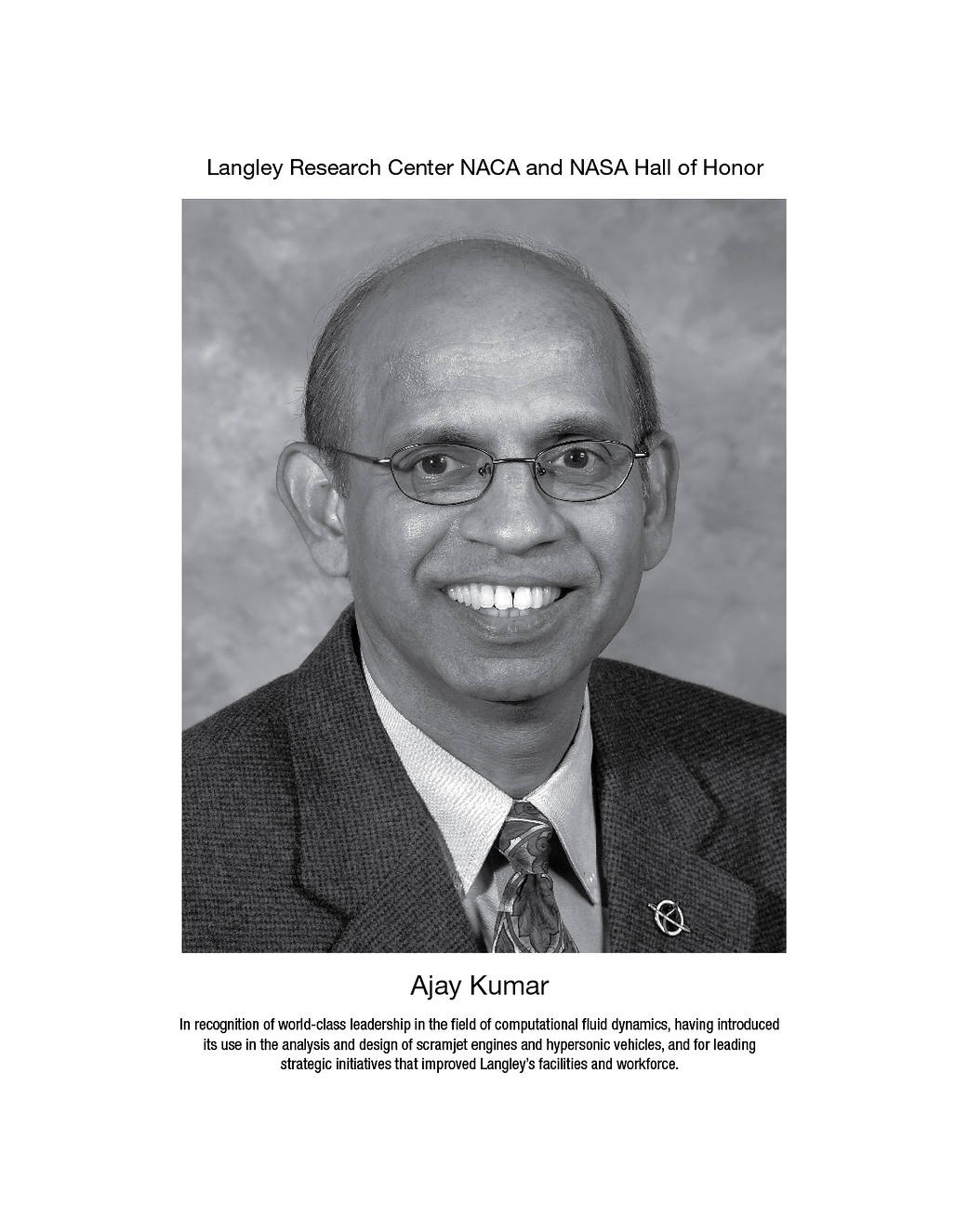Ajay Kumar
Dr. Ajay Kumar (1946-) is a world-class leader in the field of computational fluid dynamics, having introduced its use in the analysis and design of scramjet engines and hypersonic vehicles.
Kumar was born in Meerut City, U.P., India. He earned a bachelor’s degree in mechanical engineering from the Indian Institute of Technology in 1968, a master’s degree in aeronautical engineering from the Indian Institute of Science in 1970, and a doctorate in aerodynamics from Indian Institute of Technology (IIT) in 1974. He taught at IIT from 1973-75 before coming to NASA Langley under a National Research Council fellowship in 1975. He later earned a master’s degree in engineering administration in 1984 from George Washington University.
Kumar began his 30-year NASA career in 1981. He worked to advance the use of computational tools for predicting aeroheating environments for planetary entry systems. That involved improving the state-of-the-art in computational fluid dynamics as an analysis and design tool. His research and development led to computational tools that studied hypersonic configurations under the National Aero-Space Plane program in 1992 and that allowed the Galileo probe to survive through intense atmospheric heat to land successfully on the planet Jupiter in 1995. Kumar also provided critical support to the Hyper-X program, which developed a hypersonic air-breathing engine that in 2004 achieved a record-breaking speed of close to Mach 10, or 10 times the speed of sound.
Kumar led the Laminar Flow Control project team, a NASA-industry effort from 1993-1995 that successfully demonstrated supersonic laminar flow control at Mach 2 during flight tests. Moving into more management roles at Langley, Kumar started as chief of the Gas Dynamics Division in 1995, and between 1998 to 2004 served as the head of the newly formed Aerodynamics, Aerothermodynamics and Acoustics Directorate, which was responsible for overseeing 30 wind tunnels and labs. From 2004 to 2012 he served as the director of the Systems Analysis and Concepts Directorate, and from 2009 to 2010 was the acting director of Engineering.
Also looking toward Langley’s future, Kumar led several strategic initiatives, including the Facilities and Related Service Team in 2001, the Career Progression Paths Team in 2006, the Technical Quality Enhancement Team in 2010 and the Workforce Revitalization Strategy Team in 2012. He retired in 2012.
Kumar is the author or coauthor of 130 technical publications and has helped edit four books on topics related to transition, turbulence, combustion, and advanced numerical algorithms. He served on the editorial advisory board of the International Journal of Computers and Fluids, the Technical Advisory Committee of the European Hypersonic Database, and co-chaired two AGARD working groups (1997-2002) on hypersonics. Kumar has won many NASA and other awards, including the prestigious Gene Zara Award (1992) for his contributions to the National Aero-Space Plane Program, the NASA Exceptional Scientific Achievement Medal (1992), the NASA Outstanding Leadership Medal (2007 and 2012), and the Presidential Rank Award for Meritorious Executive (2007).
He is a fellow of the American Institute of Aeronautics and Astronautics and has received the Engineer Alumni Achievement Award from George Washington University, and the Distinguished Alumnus Award from the Indian Institute of Science.



























